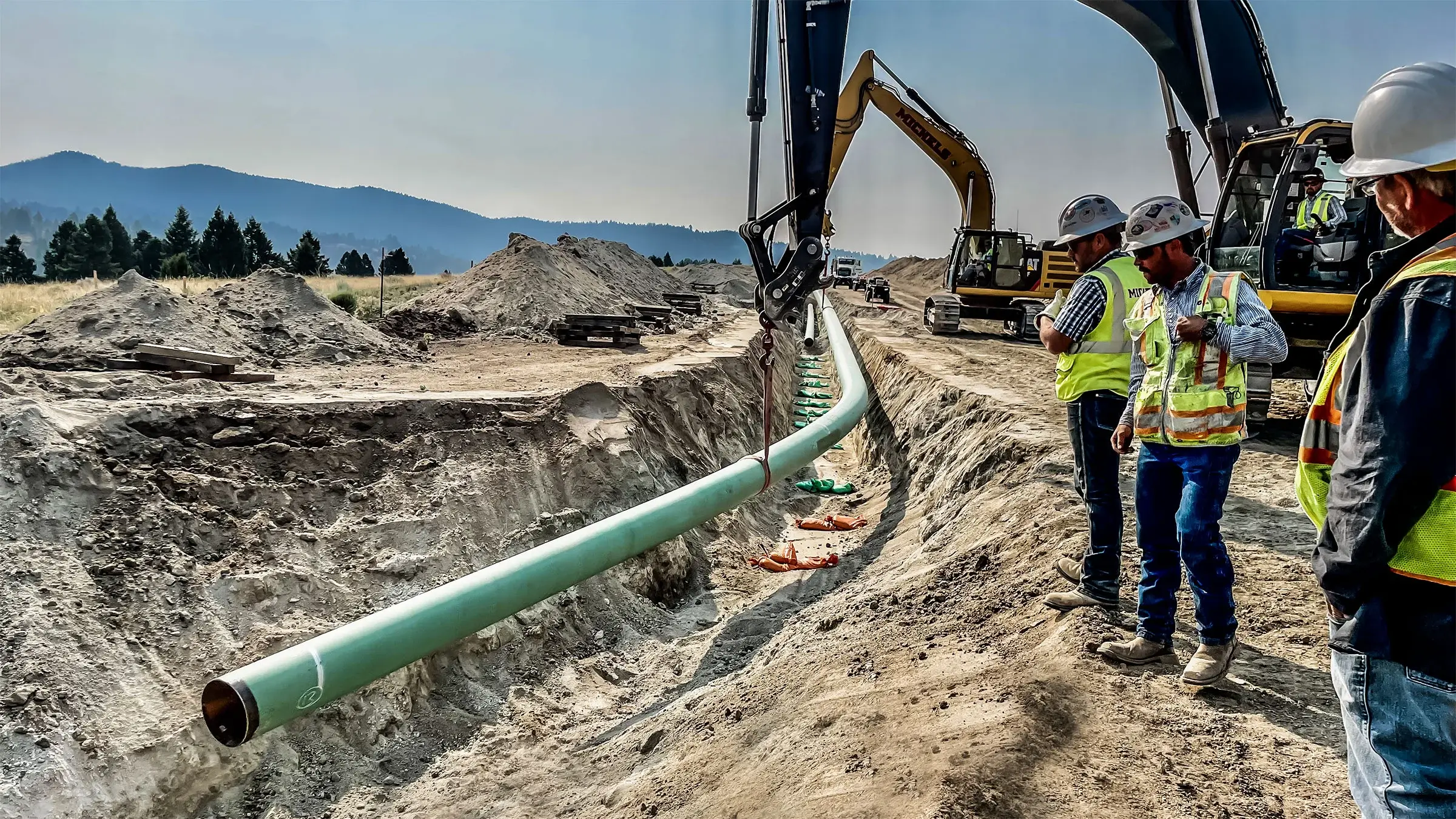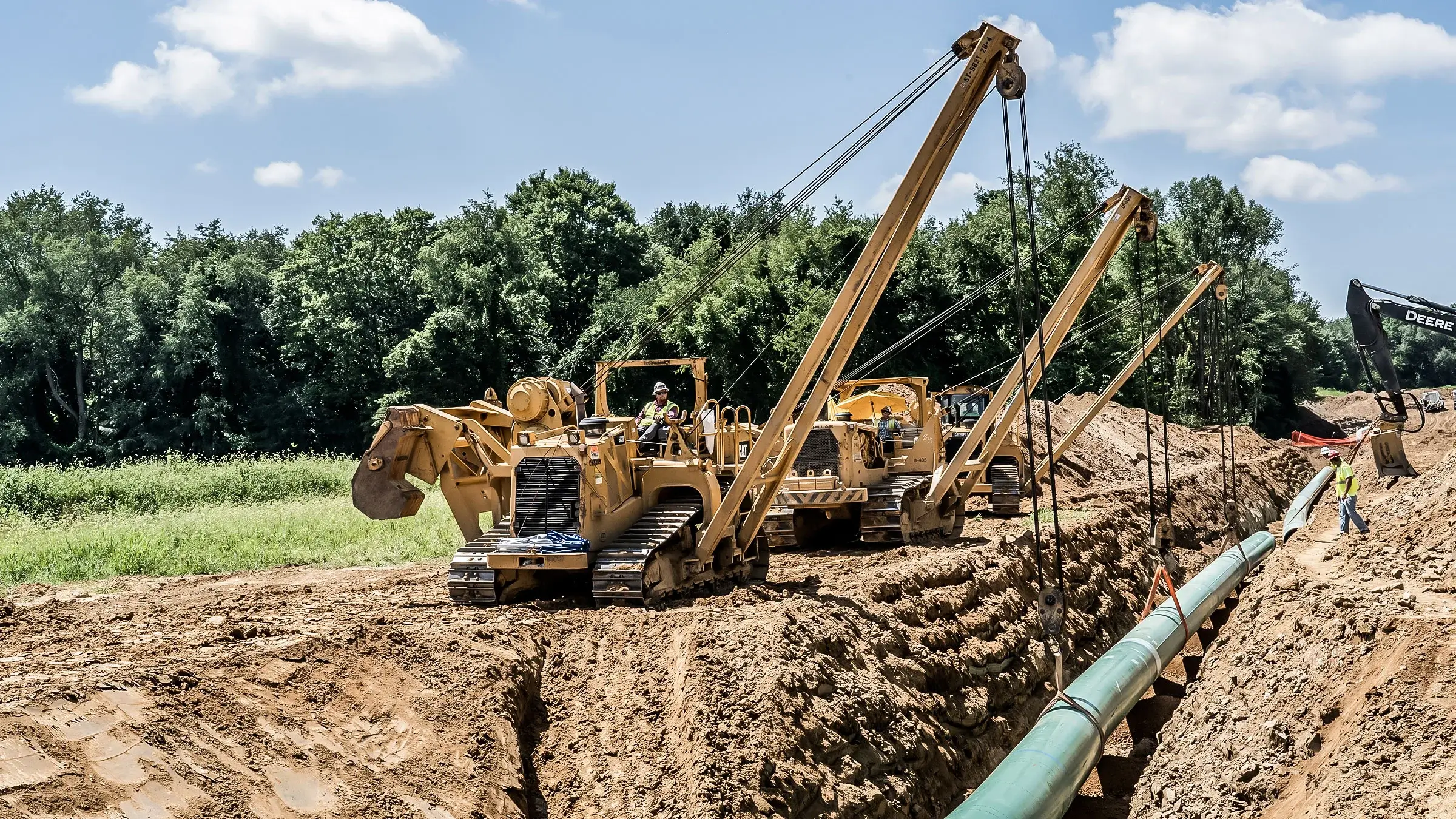How Long Does Your System’s Lifespan? Insights From Creek Pipe HDPE installation
What You Need To Learn About Pipe Trenching Solutions: An In-depth Introduction of Available Options
Pipe trenching services are important for the installation and upkeep of underground energies. They include different approaches customized to particular demands and atmospheres. Understanding these techniques is essential for effective task implementation. Each alternative offers its own set of benefits and difficulties. As the need for reliable utility monitoring boosts, knowing what to take into consideration when choosing a trenching service becomes crucial. What aspects should one focus on to guarantee success?
Recognizing Pipe Trenching: What It Is and Why It Matters
Usually overlooked, pipe trenching is an important procedure in numerous building and energy projects. This strategy involves excavating slim trenches to promote the setup of pipes for water, gas, sewage, and telecommunications. The value of pipe trenching hinges on its function in guaranteeing that these vital systems are effectively integrated into framework, enabling the risk-free and effective distribution of necessary services.Proper trenching is essential for keeping the integrity of pipelines and lessening threats connected with soil erosion and cave-ins. It likewise allows for efficient assessments and upkeep of below ground energies. Additionally, understanding the local laws and ecological factors to consider is crucial, as inappropriate trenching can lead to expensive delays and legal problems. Inevitably, pipeline trenching acts as the fundamental action that sustains numerous construction endeavors, making it a significant element of contemporary facilities growth.
Typical Trenching Methods for Underground Energies
In the domain name of underground utilities, numerous trenching methods play a vital duty in installment and upkeep - Creek Pipe roustabout. The open-cut trenching approach, directional dull technique, and hydro excavation process each deal special advantages relying on the specific task demands. Comprehending these methods is important for reliable and effective utility management
Open-Cut Trenching Approach
Open-cut trenching is a commonly utilized technique for installing below ground energies, especially when the deepness and size of the trench permit effective access. This strategy includes excavating a trench along the recommended course of the utility, providing straight exposure and accessibility for installation. It is especially beneficial for tasks that need comprehensive excavation, as it helps with quick installment and evaluation. It also demands careful planning to reduce disruption to the surrounding area, consisting of traffic and existing frameworks. Open-cut trenching is most efficient in open spaces where the dirt conditions are desirable, however it might be restricted in urban settings due to the existence of existing energies and various other below ground obstacles.
Directional Boring Technique

Hydro Excavation Process
How does hydro excavation stand out among typical trenching approaches for below ground energies? Hydro excavation makes use of high-pressure water and vacuum cleaner technology to securely get rid of dirt, enabling accurate digging around sensitive underground energies. This approach lessens the threat of harmful existing facilities compared to typical mechanical excavation. By employing water to loosen the soil, hydro excavation provides a much less intrusive strategy, lowering the capacity for soil compaction and ensuring a cleaner worksite. In addition, the procedure enhances presence during excavation, improving total precision and effectiveness. Hydro excavation is especially beneficial in city locations where utility lines are largely loaded, making it a favored option for specialists focused on safety and security and accuracy in underground jobs.
Advantages of Trenching Providers
While different methods exist for mounting underground utilities, trenching services use unique benefits that make them a favored selection for lots of jobs. One significant advantage is the cost-effectiveness of trenching, as it normally requires much less specific equipment contrasted to alternatives like hydro excavation. This usually leads to reduced labor and operational expenses. Additionally, trenching can suit a variety of energy types, consisting of water, sewer, and gas lines, supplying flexibility for contractors.Moreover, trenching permits for reliable access to numerous lines in a single excavation, lessening disruption to the surrounding area. The process additionally enables specific installation and repair service, which is crucial for sticking to regulative standards and making certain long-term dependability. Inevitably, trenching can be implemented relatively swiftly, lowering project timelines and enabling faster service restoration. These advantages collectively make trenching services a sensible option for many underground utility jobs.
Disadvantages and Challenges of Trenching
In spite of the various benefits of trenching solutions, there are remarkable disadvantages and challenges that should be thought about. One considerable obstacle is the possibility for dirt instability, which can bring about collapses, posturing risks to workers and equipment. Additionally, trenching can disrupt existing utility lines, demanding careful preparation and coordination to avoid solution disturbances. The process can likewise be taxing, specifically in city locations where area is restricted and access is restricted. Moreover, trenching may call for comprehensive licenses and regulative conformity, link adding intricacy and prospective delays to jobs. Environmental issues, such as soil disintegration and damages to regional environments, can develop from improper trenching techniques. Ultimately, the prices connected with trenching, including labor and tools, can intensify if unexpected concerns develop during the task, making it crucial for stakeholders to evaluate these obstacles against the benefits when taking into consideration trenching services.
Secret Elements to Take Into Consideration When Choosing a Trenching Solution
Choosing the ideal trenching solution can substantially impact the success of a task. Several essential variables should be analyzed to guarantee an appropriate option. The firm's experience and proficiency in trenching operations are crucial; a well-established solution with a solid track record is normally more trustworthy. Next off, reviewing the devices made use of is fundamental, as modern equipment can boost efficiency and precision. Furthermore, it is considerable to take right into account the series of solutions offered, including excavation depth and soil type handling, to verify they satisfy certain task requirements.Another variable to evaluation is the business's credibility; client evaluations and testimonies can provide understandings into previous performance. Moreover, obtaining thorough quotes that describe prices and timelines will certainly help in spending plan administration. Validating compliance with local regulations and sector requirements is vital for avoiding potential lawful concerns. By assessing these factors, customers can make a notified choice when picking a trenching service.
Safety Actions in Pipe Trenching
In pipe trenching, precaution are essential to making certain fix a leak plumbing employee protection and website integrity. Trick parts include using personal safety devices, extensive excavation website assessments, and well-defined emergency action protocols. Implementing these steps greatly lowers risks linked with trenching procedures.
Personal Protective Devices
Security in pipe trenching heavily depends on the proper use individual protective equipment (PPE) Workers ought to wear tough hats to protect versus dropping things, along with high-visibility vests to improve their presence on-site. Steel-toed boots are important for foot security versus heavy tools and products. In addition, gloves are essential for hand safety and security, specifically when taking care of rough or sharp items. Respirators may additionally be required in settings with dirt or dangerous fumes. Eye security, such as safety and security goggles, need to be used to secure versus debris. Finally, hearing security is essential in noisy job settings. By sticking to PPE standards, employees can significantly minimize the threat of injury and guarantee a safer trenching operation.
Excavation Site Assessment
Appropriately evaluating the excavation site is an essential action in assuring a secure pipeline trenching procedure. This procedure entails reviewing read this the website for possible hazards such as underground utilities, unstable soil conditions, and nearby structures. A complete analysis enables the identification of threats that could endanger worker security. Additionally, verifying the dirt type and wetness levels can help figure out suitable shoring methods to avoid trench collapses. It is vital to guarantee that the site is clear of particles which correct signage is displayed to signal workers of ongoing procedures. Normal inspections throughout the task can likewise help identify any type of changes in site problems, allowing timely changes to precaution and job procedures.

Emergency Feedback Protocols
Emergency action protocols are essential in mitigating dangers connected with pipe trenching operations. These methods guarantee that all employees are prepared to act swiftly and successfully in emergencies. Secret components include routine safety and security drills, clear communication networks, and marked fire escape. Additionally, first-aid sets and emergency situation call numbers must be readily available on-site. Trenching procedures need to additionally include procedures for taking care of hazardous circumstances, such as collapses or energy strikes. Educating workers on recognizing prospective threats and understanding their functions during an emergency situation is critical. Furthermore, preserving an upgraded website safety strategy can greatly enhance reaction effectiveness. Overall, efficient emergency preparedness fosters a safer working environment and minimizes the impact of unexpected incidents.
Cost Considerations for Trenching Services
Recognizing the financial ramifications of trenching services is crucial for project planning and budgeting. The prices linked with trenching can differ widely based on numerous variables, consisting of job dimension, soil kind, and deepness of the trench. Labor costs typically represent a significant section of the overall expense, as experienced operators are necessary for reliable execution. Additionally, tools leasing costs can add to the overall spending plan, particularly for specialized machinery.Site ease of access is one more crucial factor; tough terrain may demand extra sources, boosting costs. Permitting and governing compliance can additionally add to expenditures, especially in urban locations where guidelines are stringent.Lastly, unexpected complications, such as running into existing utilities, can bring about unforeseen costs and hold-ups. Because of this, acquiring detailed quotes from trustworthy trenching solution companies is crucial for accurate budgeting and making certain successful job conclusion.
Often Asked Inquiries
The length of time Does a Typical Pipe Trenching Job Take?
The period of a common pipeline trenching project varies substantially based on aspects such as deepness, soil problems, and project complexity. Normally, it can take anywhere from a couple of days to several weeks to finish.
What Tools Is Typically Made Use Of in Pipe Trenching?

Exist Environmental Rules for Trenching Activities?
Ecological laws for trenching tasks often require conformity with neighborhood, state, and government standards. These laws intend to decrease eco-friendly disturbance, shield water resources, and assurance correct waste monitoring throughout excavation and setup processes.
Can Trenching Services Be Combined With Various Other Building Jobs?
Trenching services can certainly be integrated with numerous building jobs. By working with initiatives, effectiveness can be achieved, decreasing interruptions while guaranteeing that all necessary facilities work is finished in a timely and cost-effective fashion.
What Are Typical Soil Enters Experienced in Trenching?
Usual dirt kinds come across in trenching consist of clay, sand, silt, and loam. Each type presents special difficulties, influencing excavation techniques and stability, requiring careful preparation to assure safe and efficient trenching procedures.